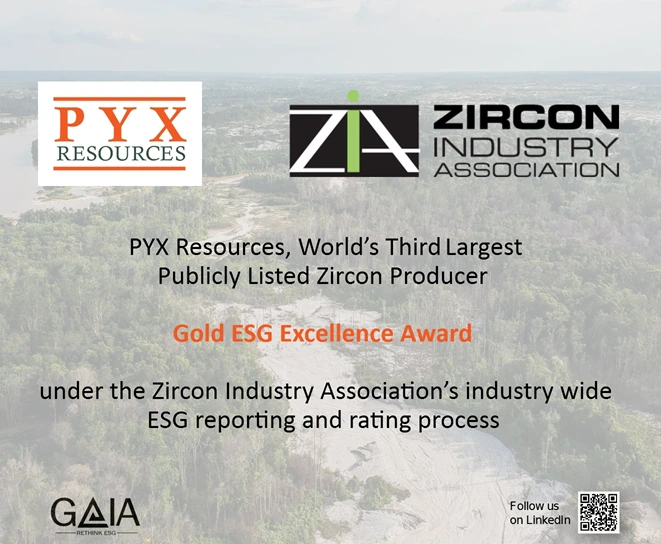Expert Talk Series – Onsite Practices and Community Relations
Hong Kong, Jul 25, 2024
Last week, we had an insightful discussion with Victoria Vargas, a board member of Lithium Universe Limited and a seasoned expert with over 25 years of experience in the mining sector, who is a strong advocate for sustainable practices. Our conversation focused on the importance of onsite practices and building strong community relationships in the mining industry.
Environmental management is always what most rating systems prioritize. This is particularly challenging for junior mining companies, which frequently lack the metrics and methodologies needed to measure environmental impact effectively.
Shifting Focus from Metrics to Practices
Victoria emphasizes the need for a paradigm shift from abstract metrics to tangible improvements in on-site practices and procedures, which could include implementing robust safety measures, educating employees on the use of Personal Protective Equipment (PPE), and adopting responsible practices early in the project lifecycle.
A significant issue facing junior mining companies is their unfamiliarity with industry standards. Victoria estimates that around 80% of these companies are not well-versed in the necessary environmental metrics. This knowledge gap is often exploited by opportunistic ESG service providers who offer quick fixes that fail to produce meaningful improvements.
Beyond Box-Ticking: Cultivating Sustainable Practices
The prevalent approach of box-ticking is inadequate for genuine ESG practices. A cultural shift towards understanding and implementing sustainable practices is essential. This involves detailed reporting on operational practices, such as waste management and tailings handling, rather than merely fulfilling regulatory checklists.
Victoria advocates for the introduction of specialized ESG auditors, akin to financial auditors, to ensure rigorous oversight and a genuine commitment to sustainable practices. Recent incidents, such as the heap leach spill at Victoria Gold (July 2024) and the leach pad slide in Turkey with SSR (February 2024), may illustrate the shortcomings of the current box-ticking approach and underscore the need for practical, on-site measures.
Effective On-Site Practice Assessments
An extensive site visit is needed for a relatively comprehensive onsite assessment, ideally lasting longer than just a day and a half. For small-cap and junior companies, it’s not feasible to conduct a full inspection, but simply being there allows for valuable observations. You can notice things like the presence and type of waste and how the company manages its tailings.
For exploration companies, specific questions are more effective than general compliance inquiries.Questions such as “How are you managing waste?” or “What types of waste are you generating?” prompt more detailed and actionable responses. It’s crucial to recognize that even exploration activities produce waste, noise, and dust. Building a culture of sustainability from the beginning, through simple yet effective practices, is vital for long-term success.
Juniors Cannot Control its Big Contractors, Is It True?
Junior companies often rely on contractors, making it challenging for them to control the contractors’ activities. However, this issue is not unique to smaller companies; even large corporations like Barrick, which uses contractors like Caterpillar, face similar challenges in controlling every aspect of contractor behaviour. Thus, junior companies cannot simply blame contractors for all issues just because they are small. As responsible entities, they must implement controls, even for minor aspects, as these are better than having no controls at all.
For example, during an onsite visit at Alamos Gold, Victoria observed that miners were not wearing helmets or safety glasses. Despite the company providing these safety items, the contractor had not supplied them to the workers. A simple inspection and directive to the contractor to enforce the use of helmets and safety glasses would address this issue, showcasing the need for junior companies to implement and enforce controls to ensure safety and compliance.
Conflict of Interest for Analysts Onsite
While having analysts on the ground is valuable to inspect those onsite problems, it presents potential conflicts of interest. Analysts might issue negative reports if a company declines a deal or positive ones if there is a business collaboration. Similarly, governments might lower standards to avoid losing mining projects and associated job creation.
Engaging an independent research team, which has no conflict of interest, to conduct these inspections or gather insights from onsite practices could be an effective solution. From Victoria’s perspective, collaboration with regulators is vital for research teams like GAIA to carry out comprehensive onsite inspections. Additionally, employing an independent auditor to support the research team is a practical step, which can further ensure the team’s thorough and unbiased evaluations.
Whistleblower Program Enhancement
While we do have a whistleblower program in place in all the corporate level to tackle bad practices in the industry, it is not fully effective. Whistleblowers often remain silent due to fear of losing their jobs. Establishing a fund to compensate and protect whistleblowers would be a good start to ensure the program functions as intended. This financial support can encourage individuals to come forward without fear of retaliation, thereby strengthening the overall effectiveness of the whistleblower program.
Challenges with NGOs
Government and NGOs inspections also play a crucial role in managing these conflicts of interest and industry practices mentioned above. While some are knowledgeable and genuine, many can be opportunistic.
Victoria mentioned that some NGOs in Columbia are financed by local politicians who have vested interests in preventing mining operations, as they benefit from local illegal mining activities. Examples from Victoria shows that NGOs, backed by various interests, can hinder mining projects under the guise of environmental or social concerns.
Many NGOs serve as fronts for lobby groups with specific political agendas, understanding the real motivations and backers behind these NGOs is crucial.
Importance of Community Relationships
Contributions to community development are often voluntary rather than mandated. In countries like Canada and Mexico, there are regulations related to environmental and regional bonding but no explicit requirements for community donations. In some African countries, specific financial contributions might be more common, but these are generally seen as part of broader corporate responsibility rather than direct mandates.
Although no universal mandates exist for local community support, fostering good relationships with local communities offers tangible benefits for mining companies. These relationships are essential for operational success, as mining companies rely on local labour, require various permits, and must navigate potential local opposition.
The process of building these relationships should begin early and involve consistent and transparent communication about both the benefits and impacts of mining activities. Companies like Alamos Gold have done well in early and continuous interaction with all stakeholders, including federal, provincial, and local authorities. They addressed the mental health of workers who spend long periods in remote areas away from their families, organized soccer games and coaching for local kids and provided practical support e.g., financial management workshops for local women. These efforts, while relatively low-cost, significantly enhanced the quality of life for both employees and community members, fostering a sense of belonging and mutual support.
Role of Leadership in Community Relationships
The role of company leadership is highlighted as pivotal in Community Relationships. CEOs and board members need to be visibly involved in both community relations and investor communications. Effective leaders balance their time between engaging with potential investors and spending time on-site to directly address local concerns. This dual focus is crucial for the long-term success of mining operations.
In summary, the mining industry must move beyond superficial compliance and embrace a process-oriented approach to ESG practices. This involves fostering a culture of sustainability, enhancing on-site practices, and implementing rigorous oversight through dedicated ESG auditors. Building strong community relationships and ensuring effective leadership are equally essential for the successful sustainable mining operations.





